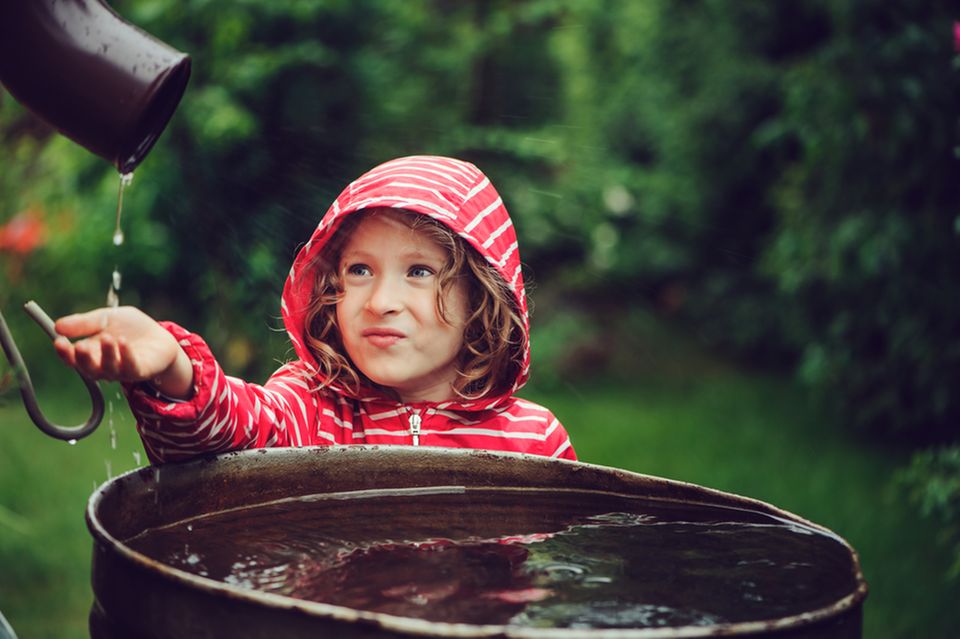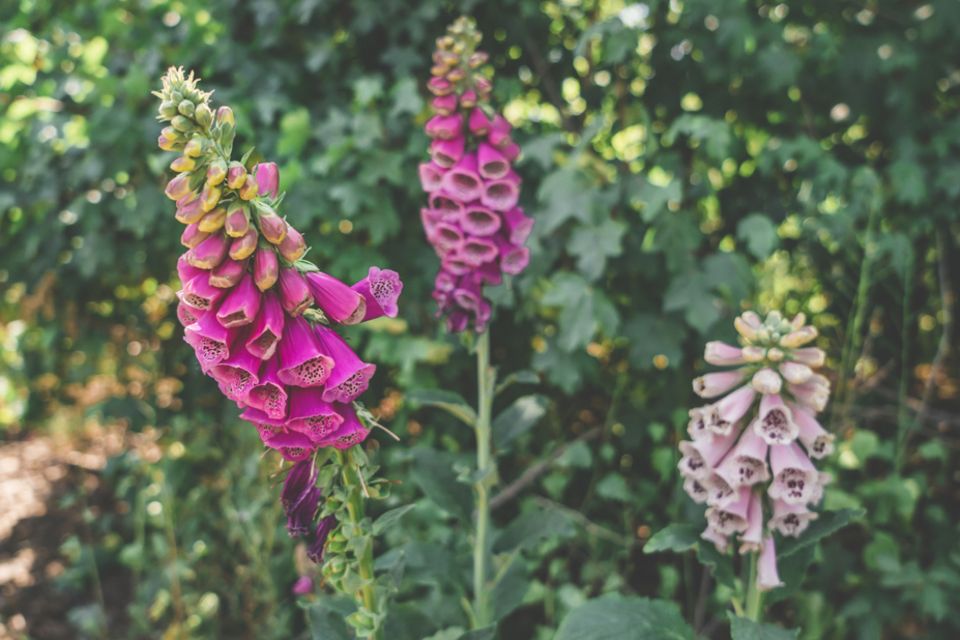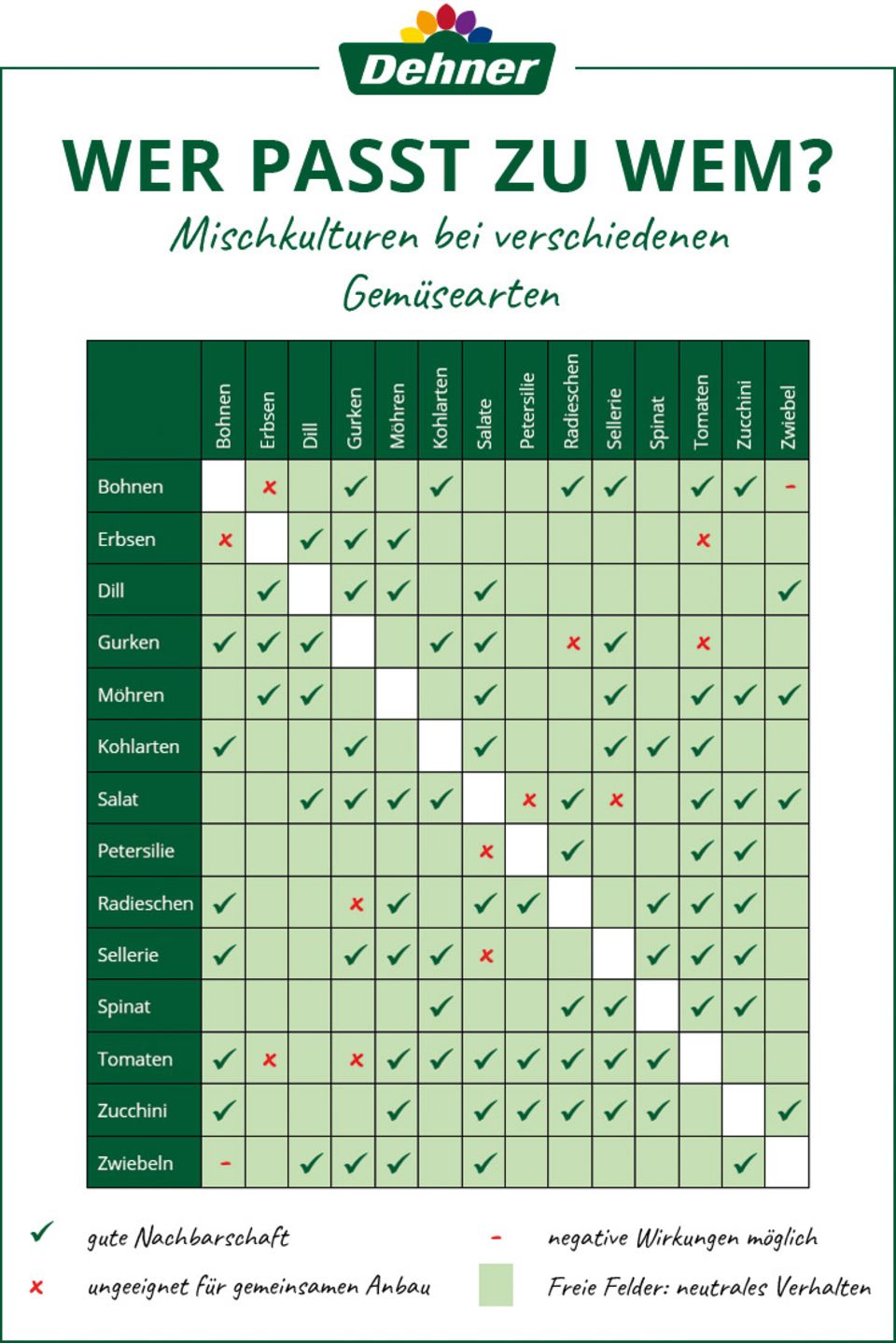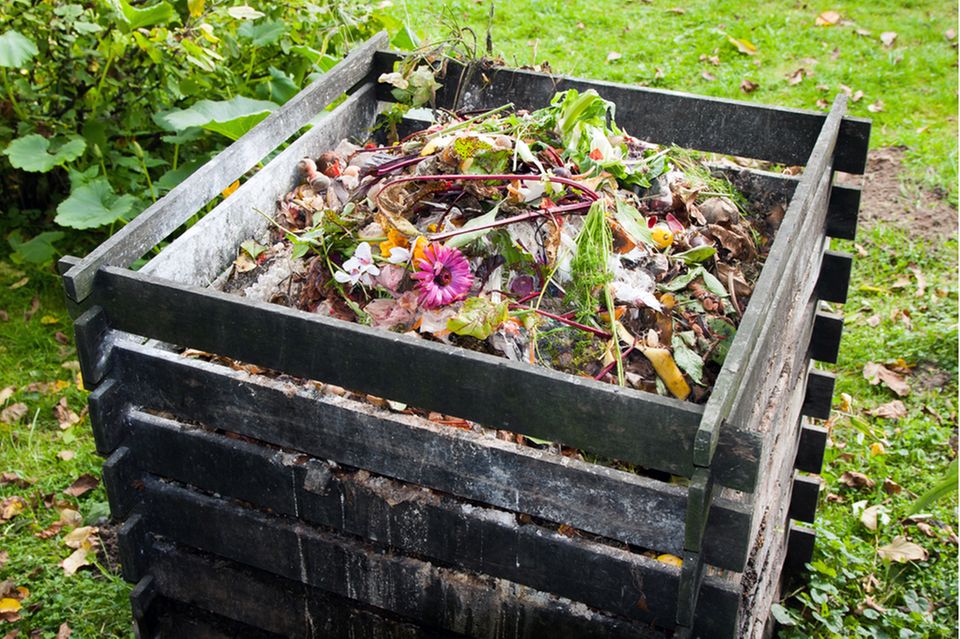A sustainable garden? It’s not that difficult to implement! We’ll show you 10 suggestions that everyone can do.
Sustainability is on everyone’s lips – and rightly so, it will continue to play an important role in the future. We too can live (more) sustainably with small and larger decisions. And what area of life is better suited than our favorite place: the garden. It is a living space, a feast for the eyes and a place to relax at the same time and can be made more sustainable with a little change. 10 suggestions for you.
Sustainable garden – 10 tips for gardening
How does a sustainable garden succeed? We have a few ideas that you can use to implement sustainability in your private piece of nature!
1. Use water consciously © Maria Evseyeva / Shutterstock
Turning on the tap or letting a lawn sprinkler do the work is certainly practical and time-saving in many ways – but unfortunately not very sustainable. Because the water from the tap has been elaborately treated, a sensible alternative for the garden is a rain barrel (or if you don’t mind the expense, you can create one cistern at). The rainwater can be used to water beds and gardens when it is very sunny and dry.
2. Peat-free potting soil
Hobby gardeners often cannot avoid getting potting soil. But it is often enriched with peat, which is mined from raised bogs – and unfortunately that is not good for our environment at all. This disrupts the ecosystem and releases large amounts of CO2. According to NABU, around a third of the approximately ten million cubic meters of peat in Germany are used by hobby gardeners. Experts estimate that the supplies will be exhausted in 50 years and the species-rich ecosystem will be destroyed if peat extraction in Germany continues as before. So if potting soilthen preferably peat-free!
3. Native Plants Red Fingergut is both a poisonous and a medicinal plant – and a beautiful eye-catcher in a sustainable garden. © jo.pix / Shutterstock
Cultivated flowers often enchant us with their beautiful sight. However, such beauties often require intensive care and are prone to illnesses. If you don’t want to do without the beautiful blossoms of a rose, for example, you can choose from a small but fine selection of local wild species, such as B. the burnet rose. The native wild roses are more robust in drought and less susceptible to disease than their bred counterparts.
Native trees are e.g.:
- common yew
- woodapple
- hornbeam
Native shrubs:
- hazelnut
- cornel
- Red currant
- Common juniper
Native perennials/annuals:
- sedum
- Red Foxglove
- poppy
The native plants have another effect… see point 7 for more on this.
4. Sustainable plant purchase
The plants themselves are just as important as the right potting soil. Grown quickly in the greenhouse and with chemical preservatives, they are usually anything but sustainable. This is best avoided by using organically grown plants.
5. Rely on mixed culture
Anyone who creates a vegetable garden should take the principle of mixed cultivation to heart. What’s behind it? There are varieties that complement each other perfectly and every hobby gardener should take advantage of that. This is how some plants help each otherfor example by keeping pests or diseases away from the plant neighbors or by promoting growth.

© Dehner
You can learn more about self-sufficiency here.
6. Observe crop rotation
In addition to the mixed culture, crop rotation is essential for a sustainable garden, because it uses the soil in the best possible way. Monocultures, i.e. the same types of plants over and over again, promote diseases and lead to reduced fertility. it makes more sense Plant plants one at a time according to their nutritional needs. One speaks of heavy, medium and weak consumers. Crop rotation begins with heavy feeders, as they need the most nutrients, followed by medium feeders and finally light feeders.
7. Attract animals
Biodiversity in the garden does not only apply to the plant world. Wherever pests show up, beneficial insects also belong to the green cosmos… These include, for example, wild bees, bumblebees, birds or earthworms. With a wildflower meadowother bee-friendly plants or nest boxes you get them natural pest controller in the garden.
8. Use natural fertilizer
Fertilizer improves the nutrient content of the soil, which in turn benefits the plants. Chemical fertilizers are not very sustainable, so you should ideally use a natural variant for your garden: den compost.
With this you take care of the soil and also get rid of annoying kitchen and garden waste!

© Evan Lorne / Shutterstock
Tip: Do you already know the worm box? This means you can also compost in your own home…
9. Native woods
Nowadays a lot is made of plastic: it is cheap, durable and with such properties has long since won its triumphant march into our everyday life. What seems to have many advantages at first glance is ultimately a major disadvantage for the environment. A significant part of our garbage ends up in the sea, where a shopping bag needs about ten to 20 years, a plastic bottle about 450 years to be broken down – not a nice thought.
Friends of the outdoor room are better off with furniture made of wood: In the garden, wooden furniture or a wooden terrace not only looks better, they also fit into a sustainable lifestyle. It makes sense to do without tropical woods with long transport routes and instead rely on durable domestic woods, e.g. B. Oak.
Also a raised bed is ideally not made of plastic but of wood. Here we show you how to fill a raised bed.
10. Upcycling
Some things we bought a long time ago, maybe they were used a couple of times – and now they are lying around unused and may eventually end up in the garbage. Too bad that valuable resources have already been used up and things now end up carelessly in the garbage can. Luckily there is a plan B for that! With upcycling you give sorted objects a second life: an old wooden box becomes a flower pot, an old teapot becomes a watering can, etc.
By the way: in ours BRIGITTE community you can exchange ideas with others about garden and plant life.
